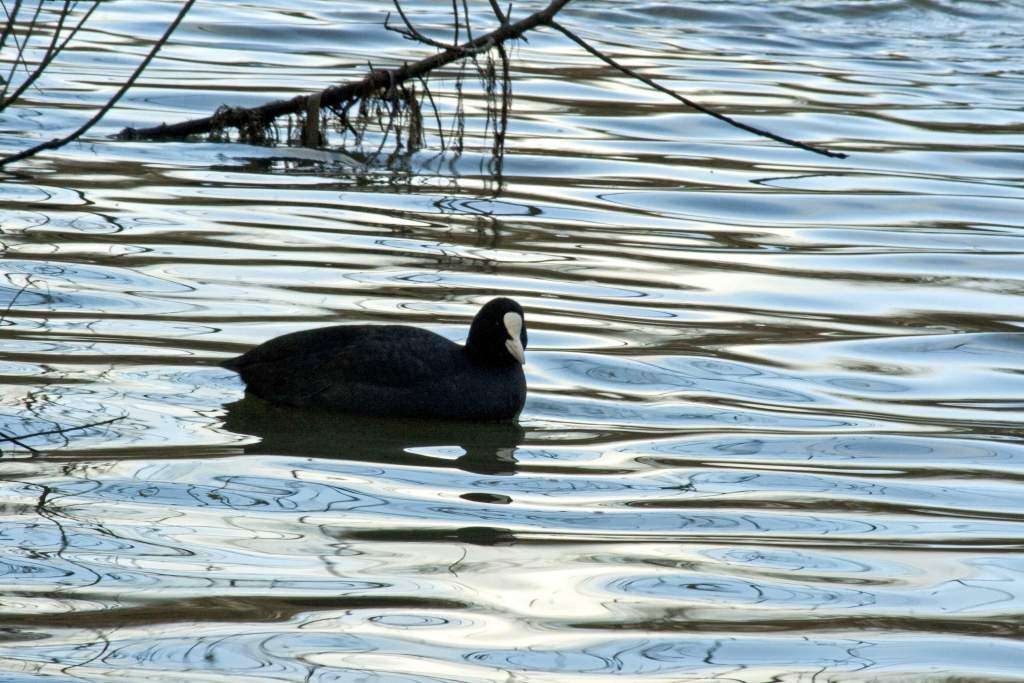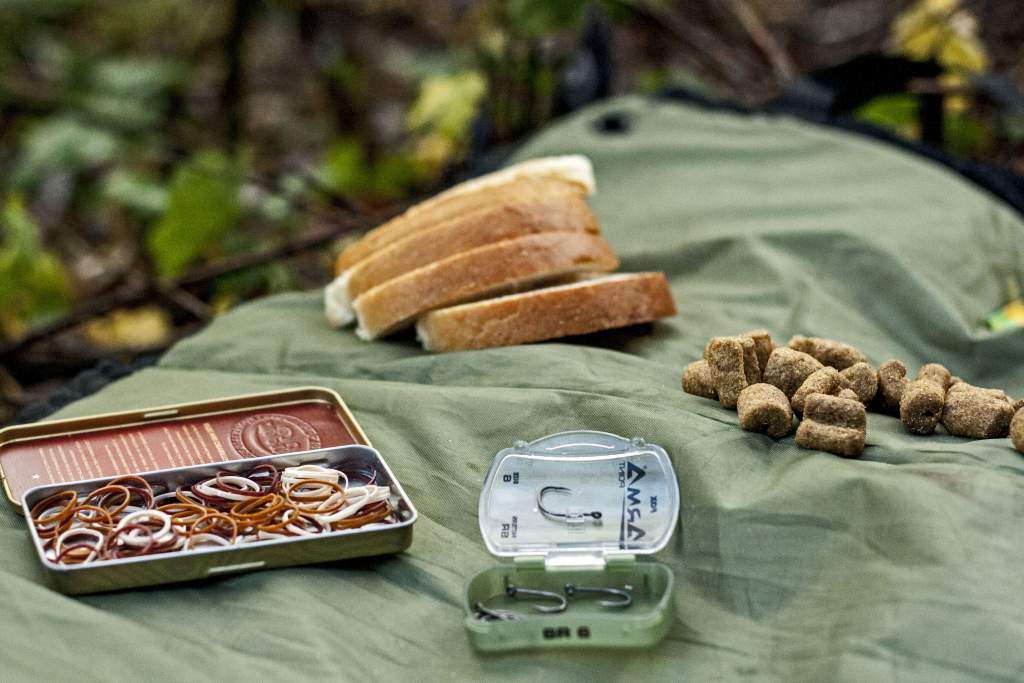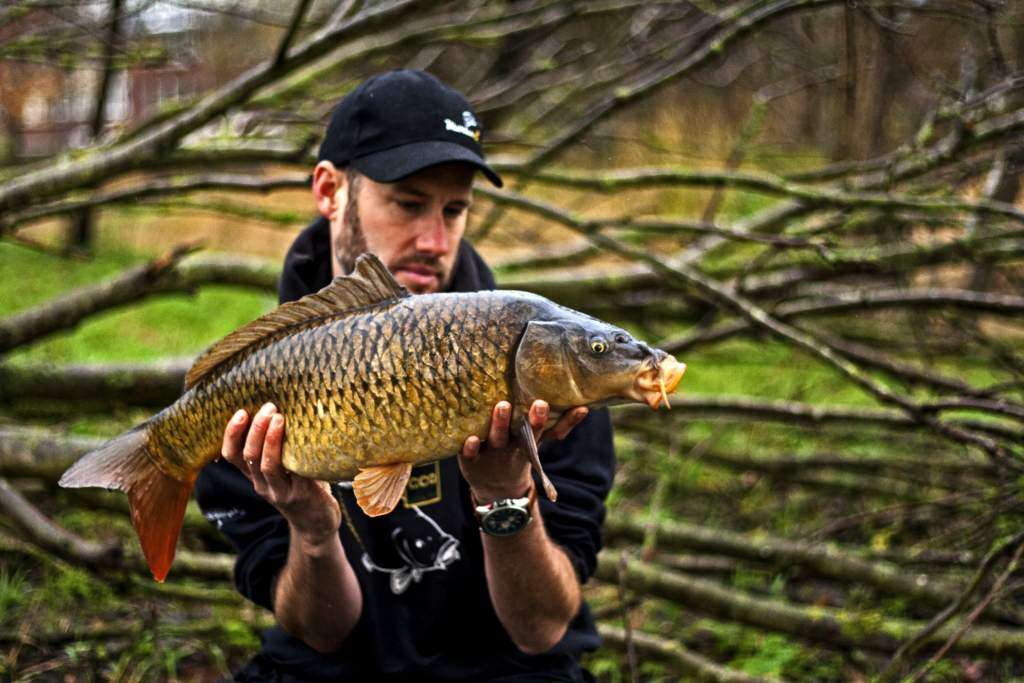Now that winters are getting warmer in the Netherlands and water temperatures rarely drop below the ‘magical’ nine degrees, it’s time for a different approach to carp angling.
Carp Feeding Behavior
When there’s an ‘R’ in the month, the days get shorter and the nights become damp and cold, autumn has arrived. Gradually, land temperatures drop and water temperatures fluctuate accordingly. While carp engage in a true feeding frenzy during September, October, and November to build up winter fat reserves for extreme weather conditions, their feeding behavior almost comes to a standstill in December and January. Short feeding periods of a few minutes to half an hour per part of the day ensure that the carp’s body uses little energy, and the carp will mostly lie still on the bottom in its winter holding area.

Feed plenty, but with small bait
Shallow Water
The days are getting shorter, and the first night frost appears. Now that the bank vegetation around the water starts dying off and all leaves have blown from the trees due to autumn storms, food sources become scarcer. ‘Warm winter days’ now cause shallow water areas to warm up by several degrees with the slightest sun or temperature rise. This is where carp like to move for their short daily meal. Like a snack wall, banks are searched, and some food can still be found under bare trees and bushes.
Surface Angling in Cold Water
You might think that surface angling for carp in winter is similar to surface angling in warmer months, but that’s not the case. While carp are opportunistic eaters in spring and summer, taking almost anything in their mouth to taste, they become real connoisseurs in winter with emphasis on ‘fine’. This means that hook bait and feed must be made smaller to avoid suspicion. Smaller feed chunks, smaller hook baits, and bread crusts. During the sparse feeding periods at the often crystal-clear surface water, the carp will be more cautious than usual, often showing in how they suck in smaller food particles just below the surface. One sound, movement, or gust of wind and the feeding stops immediately, so proceed with caution.

Water birds are formidable competitors in winter.
Finding Angling Spots
Look for windless spots on your water with remaining high vegetation, carp lie here almost year-round because edible items fall from above. Choose an almost windless day, preferably sunny. After determining your spot, feed several handfuls of chunks near the bank and under the brush. Always bring plenty of feed in winter as you need more to attract carp. Keep to one feeding spot because of water birds, which are now extra alert to feed and can spot everything on the surface. After feeding, sit at a considerable distance from the bank and observe, if necessary, with binoculars or your camera’s zoom lens. You’ll quickly see that when carp are active, they feed extremely cautiously. Have plenty of patience, it can take one to several hours before the first carp find the desire to eat.
The Equipment
Basic is the word in winter, no frills. What you need is a large bag of cat food, preferably two (first test if it floats!), floating dog biscuits, and white bread crusts, that’s it for bait. Equipment-wise, you’ll manage with a good carp float rod, a reliable reel, and a few sets of (small) hooks and hair rigs. The landing net, unhooking mat, and other gear are naturally essential. Polaroid sunglasses aren’t a luxury with the often low-hanging sun and extreme glare on the water surface.

Basic equipment, that’s all you need.
Spotted
Once you’ve seen the first carp feeding, wait a while before casting your hook bait, first observe what they’re doing! Are they feeding greedily? Are they barely visible? Are they moving fleetingly? Do you see tails or mouths? All characteristics indicating certain behavior you need to decipher. Once you understand it, approach the fish extremely carefully and cast your behavior-adapted hook bait well away from them. Now throw some extra handfuls of feed near the feeding fish and draw your hook bait into the middle. The waiting can begin, waiting that can often take several hours – patience is a virtue in winter.

Surface take at 9 degrees
Bite!
Taking the bait can happen in different ways. In winter, carp like to push the floating hook bait ahead of them to ensure it’s edible. Sometimes the hook bait bounces up and down on the water surface as the carp lies underneath, very carefully taking and spitting out the bait, but there are also individuals that eagerly snatch the bait as if it were summer. For all takes, don’t strike too early! Missing a strike in winter usually means game over.

A beautiful dark winter fully-scaled carp.
Finally
Want to try this in winter? The afternoon periods until just before dark are usually the best times for surface angling because the water has warmed up a few degrees thanks to the sun. Lots of trial and experimentation with bait can bring you more success in winter, and the advantage is that you only need to brave the cold for a limited number of hours. Additionally, winter is the quietest period along the waterside – take advantage of that.
Best of luck this winter!
Alvar Besemer



